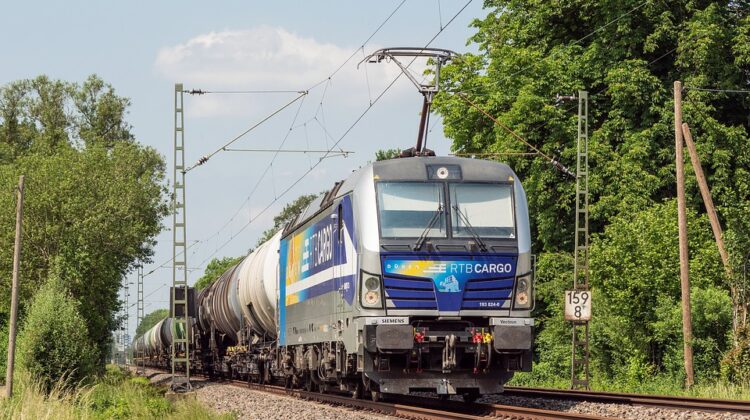
Cargo by rail set for big leap
The opening in March of a stretch of the Western Dedicated Freight Corridor (DFC) — a 641-km rail track between Palanpur (Gujarat) and Rewari (Haryana) — will see large numbers of trucks move from the highways alongside the rail-route to freight trains.
In these roll-on roll-off (RO-RO) services, trucks will be driven on to rail wagons and moved to destinations. Parcel cargo, over-dimensional cargo and container cargo are expected to be the main freight on the western rail link of Dedicated Freight Corridor Corporation of India Limited (DFCCIL).
Container movements between Western coast ports Mundra/Pipavav and the Northern region that ply on the existing Indian Railways track will migrate to the dedicated freight corridor. “The use of RO-RO and road-railers (prevalent in Europe), which can run on rail track and roads, will attract new types of products like white goods, FMCG and e-commerce on to train tracks,” DFCCIL MD RK Jain said.
DFCCIL is also looking at building freight terminals in partnership with the private sector.
The opening of the DFC will help the Indian Railways increase modal share in cargo movement as it can move heavier and longer trains faster. In fact, trains plying on the dedicated freight corridor may attain higher end-to-end speed compared to passenger trains (that have the capacity to run at higher speeds) on the parallel Indian Railways network because there are no cautionary speed restrictions on the freight corridor. Such restrictions exist on the Indian Railway network that moves passengers because of multiple reasons such as curves on the track and overhead wires.
The DFCCIL is optimistic about its plans to start RO-RO service. “We have analysed the costs for trucks. The rail freight charges for RO-RO will be lower,” another DFCCIL official told.
But this is not going to be a smooth ride. “Freight rates on DFC have to be cut sharply to make RO-RO viable on the 650-km route. RO-RO services are more viable if the alternative road route is on ghat (hilly) sections on which the trucks have to spend more fuel and time to negotiate,” said an industry executive. It is not clear whether the freight rates will decline because of the DFC and to what extent.
By providing more capacity, the DFC network will allow Railways and container train operators (CTOs) higher asset utilisation. A DFCCIL source indicated the track access charges of DFC would roughly be half the freight charges of Railways. The extent to which Railways can pass on this benefit to its customers and CTOs and by the CTOs to the exporters and importers will be clearer in the future.
Faced with empty rail network due to stoppage of passenger trains in the Covid-19 pandemic, the Railways offered incentives such as free movement of empty containers and discounts for smaller traffic, leading to steel pipes, non-basmati rice and other cargo using trains. Will this strategy be accentuated with DFC? The draft national rail plan expects a drop in the freight rates by 30 per cent over the next few years.

